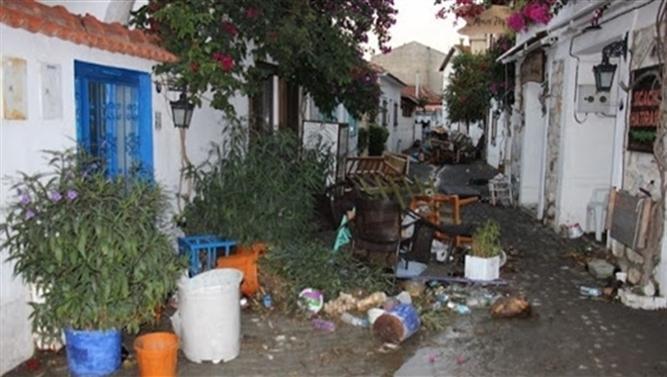
A mini tsunami hit the coastal areas of Turkey that was triggered by an earthquake in the Aegean Sea, according to the head of Boğaziçi University’s Kandilli Earthquake Research Institute.
Haluk Özener said floods at a height of 1.9 meters in Sığacık and as high as six meters were recorded in Akarca, both in the earthquake-hit western province of İzmir.
He said Turkey is no stranger to tsunamis and the country had issued a tsunami warning after a Bodrum earthquake in 2017 when a wave height of 40 centimeters was formed.
“It was determined that the tsunami got in up to 1,300 meters from the shores of the district of Alaçatı’s Azmak.
“It was detected that the flood distance in Akarca reached 820 meters and in Sığacık 320 meters,” he said.
He warned that if residents are near the beach during an earthquake and there is a possibility of a tsunami, they should leave the area for up to three hours.
Özener said the tsunami was bigger after this recent quake.
“When we look at the historical records, we see a lot of tsunamis, especially in the Mediterranean and Aegean regions.”
He said that according to scientific data, the risk of a tsunami higher than 1 meter anywhere in the Mediterranean in the next 30 years is close to 100 percent, and an earthquake bigger than magnitude-6.0 in the Aegean and Mediterranean seas is very likely to create a tsunami.
Separately, an expert stated that in the possible Marmara earthquake there is a possibility of an inland landslide and there will be a serious tsunami effect.
Geophysicist Ergin Ulutaş noted that sea water reached up to 300 meters in Sığacık after the earthquake, underlining that this situation is alarming in case of a possible earthquake in Marmara.
“It is possible that the waves can reach up to 200 meters in the shore, because there are many flat areas on the shore,” Ulutaş said.
Turkey is one of the most seismic areas in the world, with Istanbul sitting near a major fault line.
An earthquake expected in Istanbul may claim the lives of 26,000 to 30,000 people, according to experts.